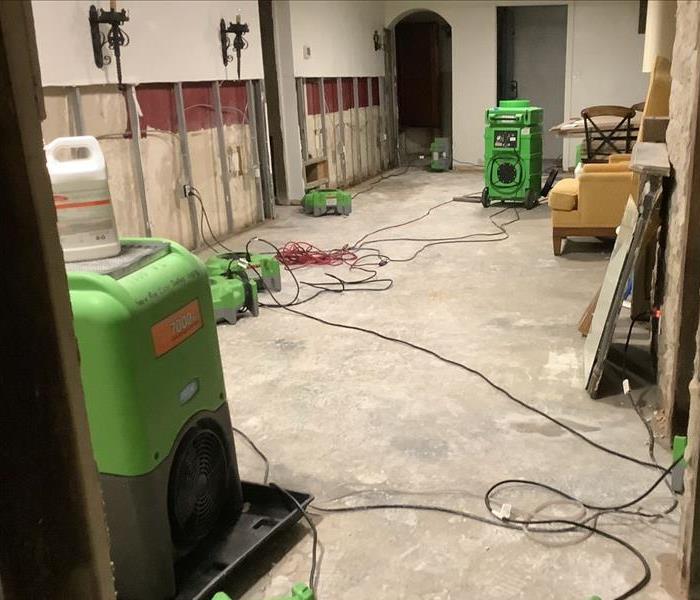The Restoring Process Explained in Simple Terms! Enjoy!
2/8/2024 (Permalink)
 SERVPRO of Balch Springs equipment hard at work at a Balch Springs library. We will keep you updated!
SERVPRO of Balch Springs equipment hard at work at a Balch Springs library. We will keep you updated!
Water damage can wreak havoc on your home, causing structural issues, mold growth, and damage to your belongings. Whether it's from a burst pipe, a leaking roof, or a natural disaster, swift action is crucial to mitigate the damage and restore your home to its preloss condition. In this guide, we'll walk you through the comprehensive water damage restoration process.
1. Assessment and Inspection:
The first step in water damage restoration is a thorough assessment and inspection of the affected areas. Trained professionals will evaluate the extent of the damage, identify the source of the water intrusion, and categorize the water based on its contamination level (clean, grey, or black water).
2. Water Extraction:
Once the assessment is complete, the next step is water extraction. Industrial-grade pumps and vacuums are used to remove standing water from the premises. This step is essential for preventing further damage and mold growth.
3. Drying and Dehumidification:
After water extraction, the drying process begins. High-powered fans and dehumidifiers are strategically placed to remove moisture from the air and surfaces. This helps prevent secondary damage and inhibits mold growth.
4. Cleaning and Sanitizing:
All affected surfaces and belongings are thoroughly cleaned and sanitized to eliminate any traces of contamination and prevent microbial growth. This may involve using antimicrobial solutions and specialized cleaning techniques.
5. Restoration and Repairs:
Once the area is completely dry and sanitized, restoration and repairs can begin. This may involve replacing damaged drywall, flooring, insulation, and other structural components. The goal is to restore your home to its preloss condition, both aesthetically and functionally.
6. Mold Remediation:
In cases where mold growth is present, specialized mold remediation techniques are employed to safely remove mold colonies and prevent recurrence. This may include containment, air filtration, and the use of antimicrobial agents.
7. Monitoring and Follow-Up:
Even after the restoration process is complete, monitoring is essential to ensure that there are no lingering issues or signs of water damage. Follow-up inspections may be conducted to verify the effectiveness of the restoration efforts and address any concerns.
Conclusion:
Water damage restoration is a complex process that requires expertise, equipment, and swift action. By following these steps and enlisting the help of experienced professionals, you can mitigate the damage, restore your home, and regain peace of mind. Remember, when it comes to water damage, time is of the essence, so don't hesitate to seek help at the first sign of trouble.




 24/7 Emergency Service
24/7 Emergency Service